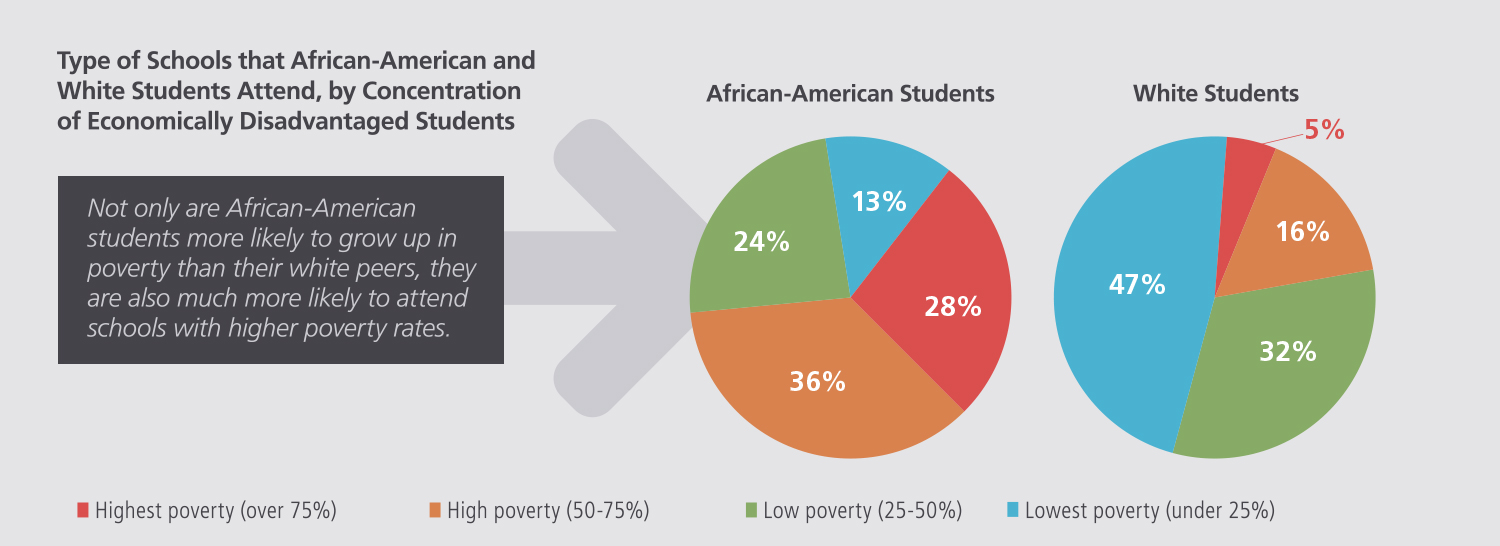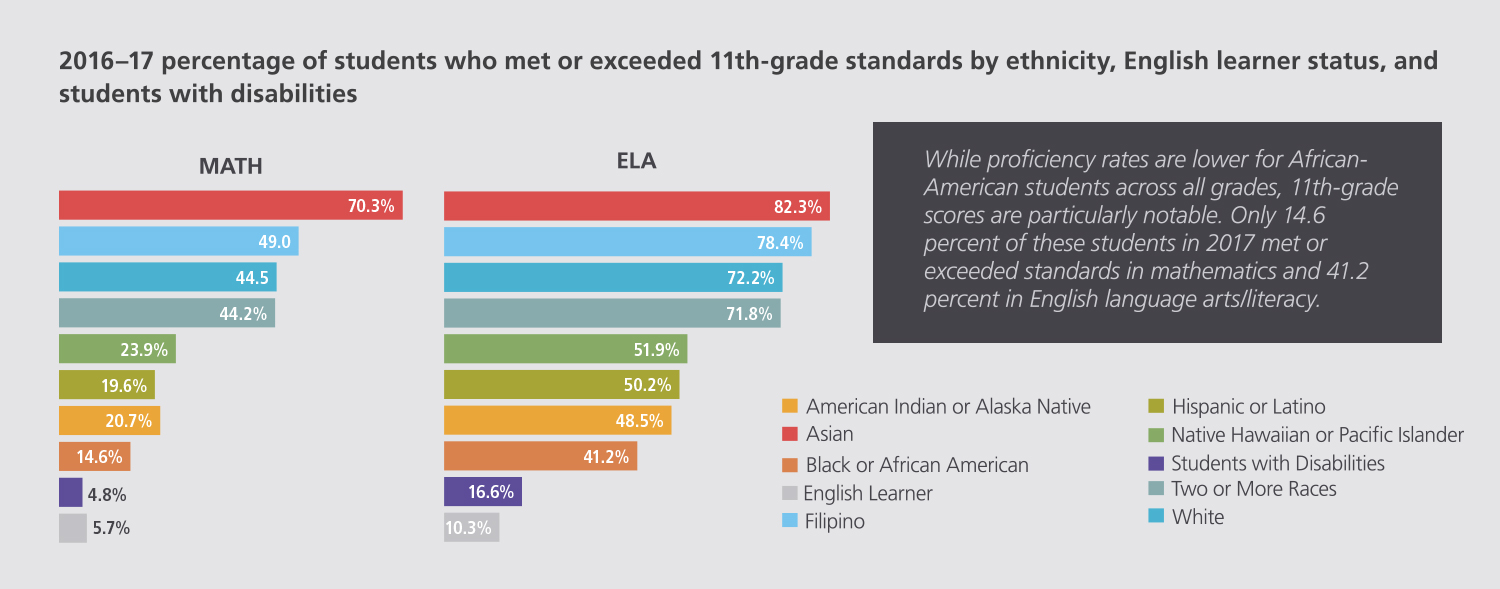
In terms of numbers (not percentages), California’s largest urban school districts serve the greatest numbers of African-American students. These school districts are in the largest five urban centers in California: Los Angeles, Long Beach-Santa Ana, San Francisco-Oakland, San Diego, Riverside-San Bernardino and Sacramento.

African-American students are also more likely to attend less ethnically diverse schools. When looking at schools based on their enrollment of nonwhite students, nearly three out of four African-American students attend schools that have a student enrollment that is more than 75 percent nonwhite. By comparison, less than one in five white students attend schools that are more than 75 percent nonwhite.

While proficiency rates are lower for African-American students across all grades, 11th-grade scores are particularly notable. These are students nearing the end of their K-12 public education years who should be prepared for college, career and civic life. However, only 14.6 percent of these students in 2017 met or exceeded standards in mathematics and 41.2 percent in English language arts/literacy. Moreover, these are the students who have persisted in school. Many others with the greatest challenges may have already dropped out.
- Invest in Early Education
- Provide Access to High-Quality Curriculum and Materials
- Support Access to High-Quality Staff
- Ensure Adequate Student Supports
- Cultivate Cultural Respect and Relevance
- Foster Collaboration
- Support Family and Community Engagement
For more detailed information about the above strategies, plus other helpful resources on addressing the opportunity and achievement gaps facing California’s African-American students, visit blog.csba.org/african-american-students.